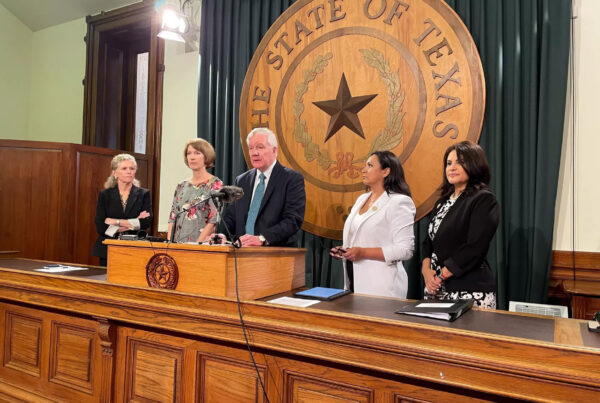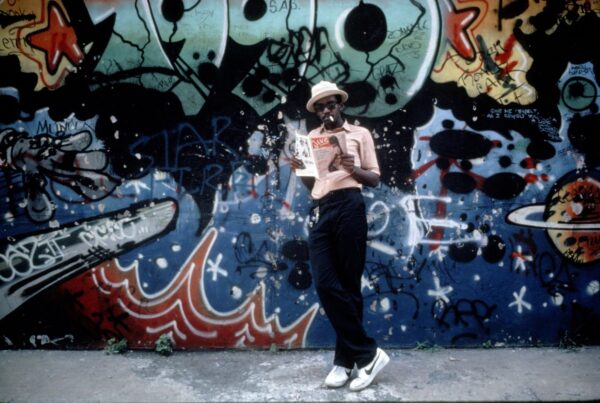Texas is known to be a place rife with political arguments and controversy. As the second most populous state in the country, behind California, it’s natural that there would be a range of viewpoints, often leading to a polarized public. So, it’s nice when we’re able to take a break from those issues to focus on things that there’s more agreement over, like the pleasure of Texas art and music.
For many years, the state has appointed poet laureates, state musicians and state artists. It’s a process that happens every two years as part of the otherwise often blustery legislative session.
Gary Gibbs, executive director for the Texas Commission on the Arts, spoke with the Texas Standard about the history of Texas recognizing state artists and how his agency is involved in the process. Listen to the story above or read the transcript below.
This transcript has been edited lightly for clarity:
Gary Gibbs: The state has recognized poet laureates for many, many years. And the way that worked was like a legislator would have a favorite poet in his community and write a resolution and boom, it happened. So, about 20 years ago, I guess it was now, they standardized the process for electing not only a poet laureate, but a state musician and a state artist in both 2D and 3D. And so that is in statute, and our agency, the Texas Commission on the Arts, is required to facilitate that process every two years.
Texas Standard: You mentioned the different categories now. It looked like it started about in the 1930s, as you said, with the poet laureates and then the musician may have been the last one added. Now we’re at 2D and 3D artists. Does that feel like the right number to you?
Well, in this particular session that just ended, a bill was passed that will add a new category. And so it’s going to add a classical musician category. So we’ll have two categories for musicians: one for classical traditions and one for non-classical traditions. And the reasoning behind that is, as you can imagine, it’s difficult for a classical pianist in Texas, who’s internationally known, to compete with Willie Nelson, just because of the recognition of those different artists.
So talk to me about the process. You mentioned this was standardized in the last 20 years. How do people become nominees for these designations?
Anyone in the state can nominate someone. You can self-nominate yourself if you’re an artist that feel like you’ve reached that level of distinction. And then we take those lists of nominees, all of them, to a committee of experts in each discipline. And they whittled that big list down to no more than 10 in each category.
And then there’s a committee called the State Artist Selection Committee that’s appointed by the governor, the lieutenant governor and the speaker of the House. And these are primarily laypeople, not experts. They look at those list of 10, and from those 10, they recommend who the state artists should be.
» GET MORE NEWS FROM AROUND THE STATE: Sign up for our weekly ‘Talk of Texas’ newsletter
So what sorts of considerations does the committee take into account?
They take into account how the artist reflects Texas culture, the level of success that the artist has had, awards that they’ve been given and then also just their own – this is what I like so much about this process, is it’s not arts experts deciding who the state artists are; it’s members of the public, it’s the citizenry that’s deciding – so a lot of it has to do with just which artist appeals to that particular person that’s serving on the committee.
So we’ve been burying the lead a bit here. Can you tell me about the designees for 2023?
I can, yeah:
– The state musician is from Austin, and it’s Gary Clark Jr.
– The state poet laureate for 2023 is also from Austin, ire’ne lara silva.
– The state visual artist 2D is from San Elizario, which is on the outskirts of El Paso; his name is Gaspar Enriquez.
– And the state 3D artist is from Lubbock. He’s a ceramicist; his name is James Watkins.
So Texas Standard’s plan is to highlight the work of each of these artists over the next month and then do the same thing in 2024. Why do you think it’s valuable to keep naming state artists?
The arts represent all of the best of what Texas has to offer. And these are talented artists who have had great careers. And this recognition allows the general public to know that the arts contribute not only to our quality of life in the state, but also to the economic vitality that state has, because the arts and culture are big business for this state.
Now these folks don’t get a big chunk of money from Texas or anything like that; it really is a bit of a symbolic designation. Is that right?
That’s correct. The statute prohibits any kind of remuneration for the position, so it’s an honorary title. They can use it in marketing their work. We also have something called the Texas Touring Roster where artists can be brought into a community for performances and will help pay part of that artist fee and they can be added to the Texas Touring roster if they wish.
What else? Was there anything else that you would like people to know about either this process or just what you guys do in general over there?
Yeah. I would hope that the public recognizes the importance of this program, but also the fact that the state of Texas has an arts agency fully devoted to promoting arts and culture in the state of Texas and that it’s what makes Texas a great place to live and work.

















